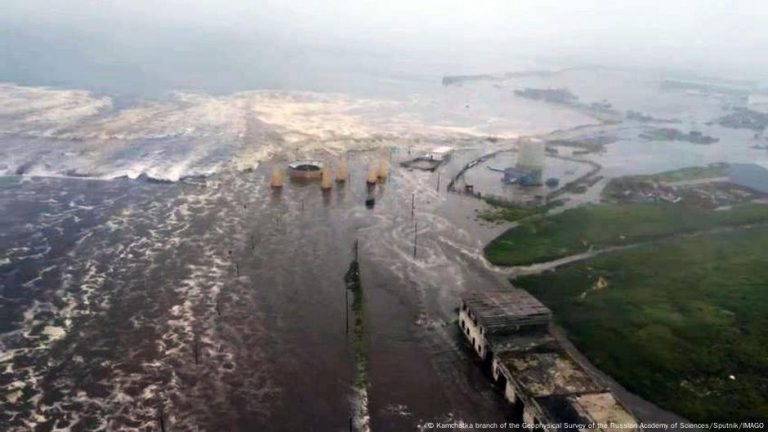Tsunami Fears and Misinformation Surge After Powerful Earthquake Off Russia’s Coast
A powerful magnitude-8.8 earthquake that struck off Russia’s east coast triggered tsunami warnings and evacuations across the Pacific, from Japan to Peru. While the earthquake generated genuine concern and prompted precautionary measures, a wave of misinformation quickly followed, spreading rapidly through social media platforms. False claims, out-of-context footage, and AI-generated fakes added to the anxiety and confusion surrounding the natural disaster.
Oprah Winfrey Caught in the Crossfire of Misinformation
Talk show host and actress Oprah Winfrey, a part-time resident of Maui, Hawaii, became the target of online accusations. Social media posts falsely claimed that Winfrey had blocked access to a private road leading to her property, preventing people from reaching higher ground as the tsunami warning was issued. The Maui Police Department, however, confirmed that the road was open, and Winfrey’s spokesperson issued a statement refuting the claims, emphasizing that they had ensured access to the road as soon as the warnings were received. Despite these clarifications, the false narrative persisted, fueled by anger and speculation, highlighting the difficulty of combating misinformation once it gains traction online.
Old Footage Resurfaces with False Context
As is common during breaking news events, older videos were re-shared with misleading captions, falsely claiming to depict the aftermath of the Russian earthquake. One widely circulated video showed people fleeing a rooftop pool during an earthquake, but the footage was actually from a 2025 earthquake in Myanmar, with tremors felt in Thailand. Another video purportedly showing the tsunami’s impact in Russia was actually several years old and originated from Greenland, depicting a tsunami triggered by a landslide. Similarly, footage of waves crashing on a beach in South Africa was misrepresented as recent tsunami footage from Russia. These instances underscore the importance of verifying the source and context of videos before sharing them during crisis situations.
Speculation Surrounding Stranded Whales in Japan
Adding to the mix of information and speculation, images of stranded whales on a Japanese beach circulated online, with some suggesting a link to the earthquake and subsequent tsunami. While the images were genuine, Chiba prefectural police reported that the whales had been beached the day before the tsunami, indicating that the events were likely unrelated. Experts quoted in news reports cautioned against assuming a causal link between whale strandings and earthquakes, emphasizing the frequency of such strandings in Japan.
The Rise of AI-Generated Disinformation
The proliferation of AI-generated content further complicated the information landscape. Fake images purporting to show the tsunami’s devastating impact on Balboa Island in California circulated widely. These AI-generated visuals depicted submerged buildings, but contained inconsistencies that betrayed their artificial origin. Furthermore, the images were posted before any significant tsunami impact was expected in California, adding to their misleading nature. AI detection tools confirmed the images as artificially created, highlighting the growing challenge of discerning real footage from fabricated content. Another AI-generated video showed people seemingly unconcerned as a large wave approached and washed over them on a beach. The lack of reaction from the individuals in the video and the unnatural appearance of the wave pointed towards its artificial origin.
Navigating the Deluge of Information During Crises
The earthquake and tsunami event underscored the critical need for verifying information before sharing it online, particularly during rapidly evolving situations. The spread of misinformation, whether intentional or accidental, can exacerbate anxiety and hinder effective response efforts. The use of old footage with false context, the manipulation of genuine events to fit a narrative, and the emergence of AI-generated fakes all pose significant challenges to accurate reporting and public understanding. Relying on reputable news sources, verifying information through multiple channels, and exercising caution before sharing content are crucial steps in mitigating the spread of misinformation during times of crisis.


